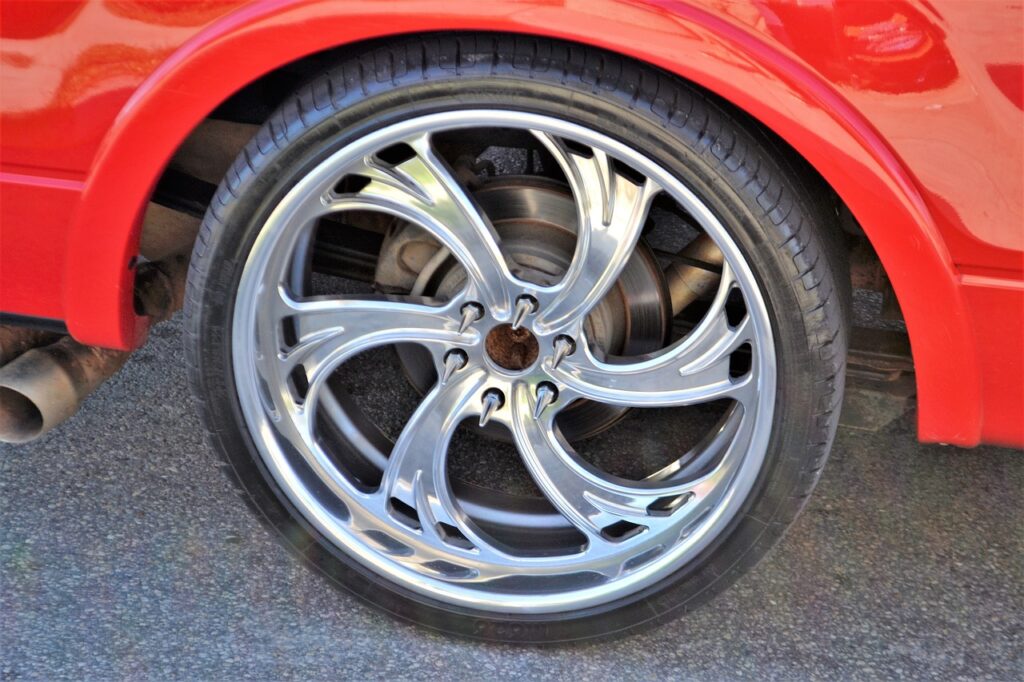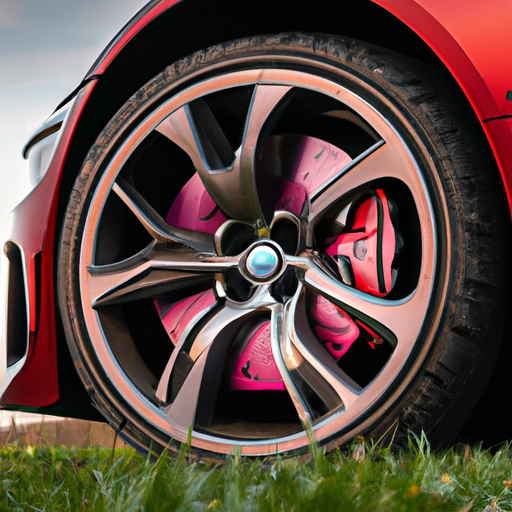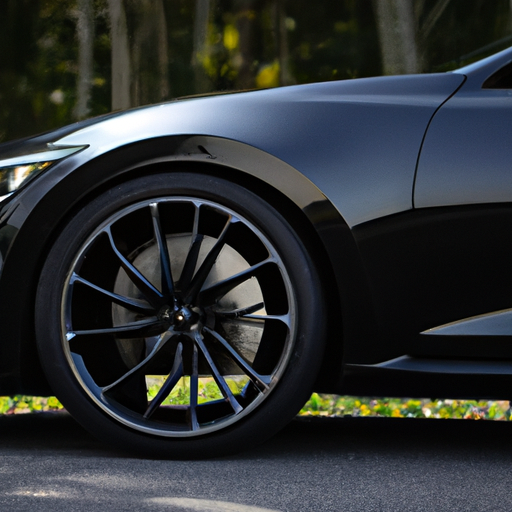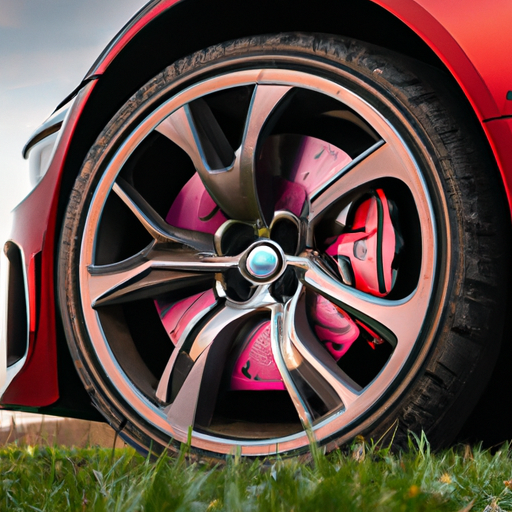Have you ever wondered if it’s possible to mix and match wheel styles on your car? The answer might surprise you. While some people may prefer a uniform look for their wheels, others are curious about the potential for a unique and eye-catching combination. In this article, we will explore whether it’s feasible to mix and match wheel styles on your beloved vehicle, and if so, what factors you should consider before making this bold decision. So, fasten your seatbelt and let’s embark on this thrilling wheel adventure together!
Factors to consider before mixing and matching wheel styles
When it comes to personalizing your car, one area where you can make a significant impact is by mixing and matching wheel styles. Before you dive into this exciting endeavor, there are a few factors you should consider to ensure that you make the right choices. Taking these factors into account will help you achieve the perfect balance of aesthetics, fitment, performance, and safety.
Aesthetics
One of the primary reasons drivers mix and match wheel styles is to enhance the overall look and appeal of their vehicles. By choosing wheels that complement your car’s design, you can completely transform its appearance. However, it’s crucial to make sure that the different wheel styles you select work harmoniously together, creating a cohesive and visually appealing result. You don’t want your car to look like a mismatched jigsaw puzzle, so take the time to carefully consider the aesthetics of each wheel style you plan to mix.
Fitment
Wheel fitment is an essential consideration when mixing and matching wheel styles. Different wheels have varying sizes and offsets, which can affect how they fit onto your car. It’s important to ensure that the wheels you choose have the correct specs for your vehicle. Improper fitment can lead to rubbing against the wheel well or suspension components, causing damage to both your car and the wheels themselves. Before making any decisions, consult your vehicle’s manual or consult with a professional to determine the appropriate fitment for your car.
Performance
While aesthetics are crucial, performance should never be overlooked when mixing and matching wheel styles. Different wheel styles can impact your car’s handling, acceleration, and braking capabilities. Lighter wheels can improve performance by reducing unsprung weight and enhancing agility, while larger wheels can provide better traction. However, it’s essential to strike a balance between aesthetics and performance, ensuring that the wheels you select offer both visual appeal and an improvement in driving dynamics.
Safety
Perhaps the most critical factor to consider when mixing and matching wheel styles is safety. Your wheels are a vital component of your car’s overall safety system, and any modifications should not compromise this. Ensure that the wheels you choose meet the necessary load rating requirements for your vehicle. Properly fitted wheels will distribute the weight evenly, ensuring optimal handling and minimizing the risk of accidents. Additionally, consider the effect of different wheel sizes on your vehicle’s suspension and braking systems, as these can affect safety as well.
Understanding wheel types
Before diving into the world of mixing and matching wheel styles, it’s essential to understand the different types of wheels available. Here are three primary categories you should be familiar with:
OEM Wheels
OEM (Original Equipment Manufacturer) wheels are the wheels that come standard with a particular vehicle straight from the factory. These wheels are designed to meet the car manufacturer’s specifications and are often the preferred choice for those seeking a more refined look. OEM wheels are generally well-suited to the vehicle’s design and performance capabilities. However, they may lack the unique flair or customization options available with aftermarket wheels.
Aftermarket Wheels
Aftermarket wheels are wheels that are not produced by the original vehicle manufacturer. These wheels come in a wide range of sizes, finishes, and designs, offering car enthusiasts the opportunity to enhance their vehicle’s aesthetics. Aftermarket wheels are often made from materials such as aluminum alloy, which are lighter and more durable than OEM wheels. They provide greater customization options, allowing you to find the perfect style to suit your taste.
Replica Wheels
Replica wheels are aftermarket wheels that mimic the design of OEM wheels from specific vehicle models. They offer a more cost-effective alternative to purchasing genuine OEM wheels and can provide a similar aesthetic appeal. However, it’s important to note that replica wheels may not have undergone the same rigorous quality control as OEM wheels. It’s crucial to ensure that the replicas you choose meet proper safety standards before installing them on your vehicle.

Pros and cons of mixing and matching wheel styles
Mixing and matching wheel styles offer both advantages and disadvantages. By weighing these pros and cons, you can make an informed decision on whether or not it’s the right choice for your car.
Advantages of mixing and matching
One of the primary advantages of mixing and matching wheel styles is the ability to create a unique and personalized look for your vehicle. By combining different wheel designs, finishes, and colors, you can truly make your car stand out from the crowd. This customization allows you to express your individuality and enhance the overall aesthetics of your vehicle.
Additionally, mixing and matching wheel styles can provide improved performance benefits. By carefully selecting wheels with lighter weights, better offsets, or larger diameters, you can enhance your car’s handling, cornering, and acceleration capabilities. This can lead to a more enjoyable driving experience and provide a noticeable difference in performance.
Disadvantages of mixing and matching
Although mixing and matching wheel styles offer numerous benefits, there are a few drawbacks to consider. The first and most significant disadvantage is the potential for improper fitment. Different wheel sizes, widths, and offsets can impact how the wheels sit on your vehicle. Improper fitment can lead to rubbing against components, affecting both the wheels and the car. It’s crucial to ensure that the wheels you choose have the correct specifications for your car to avoid any fitment issues.
Another disadvantage is the cost. Mixing and matching wheel styles can quickly become an expensive endeavor. Quality aftermarket wheels and tires can be costly, especially if you’re considering a range of styles. Additionally, depending on your vehicle’s specifications, you may need to purchase different wheel sizes or additional equipment such as spacers or hub rings to achieve the desired fitment. These additional expenses can add up, so it’s essential to set a budget and prioritize your preferences accordingly.
Choosing the right wheel sizes
Selecting the proper wheel sizes is crucial when mixing and matching wheel styles. Here are a few key considerations to keep in mind:
Wheel diameter
The wheel diameter refers to the distance across the wheel, from lip to lip. When choosing the right wheel diameter, it’s essential to consider the overall aesthetic you want to achieve and how it will impact your car’s performance. Larger wheel diameters can provide a more dramatic and aggressive look, but they may also result in a harsher ride quality. Smaller wheel diameters can offer a more comfortable ride, but they may not provide the same visual impact. Consider your priorities and the intended use of your vehicle when selecting the wheel diameter.
Wheel width
Wheel width refers to the distance from the inside to the outside edges of the wheel. It plays a crucial role in determining tire fitment and how the wheels will sit on your vehicle. Wider wheels can accommodate wider tires, offering better traction and handling capabilities. However, it’s important to ensure that the wheel width is appropriate for your tire size to prevent any fitment issues, rubbing, or compromised performance.
Offset
The offset refers to the distance between the centerline of the wheel and the mounting face. It plays a significant role in determining how the wheel sits in relation to the wheel well and suspension components. Different offset values can affect the clearance between the wheel and various parts of your vehicle. Positive offset pushes the wheel towards the car’s centerline, while negative offset pushes the wheel further out. When mixing and matching wheel styles, it’s crucial to ensure that the offset of each wheel is compatible to avoid any fitment or rubbing issues.
Bolt pattern
The bolt pattern refers to the number of bolt holes on the wheel and the diameter of the circle they form. It’s crucial to select wheels with the correct bolt pattern to ensure a secure fitment. Using wheels with an incompatible bolt pattern can cause excessive stress on the wheel studs or hubs, compromising safety. Before purchasing any wheels, verify the bolt pattern specifications required for your vehicle to ensure a proper fit.

Tire considerations
Choosing the right tires to accompany your mixed and matched wheel styles is just as important as selecting the wheels themselves. Here are a few key considerations when it comes to tires:
Choosing the right tire size
The tire size plays a crucial role in determining how the tire fits on the wheel and the overall diameter of the tire. When selecting tire sizes, it’s important to consider the wheel size and the recommended tire width range for that particular wheel. The tire size should be appropriate for your vehicle’s suspension and wheel well clearances to prevent any rubbing or interference. Additionally, consider how the tire size will impact your car’s speedometer reading and overall gear ratio.
Tire aspect ratio
The tire aspect ratio refers to the sidewall height of the tire as a percentage of its width. Different aspect ratios can affect the tire’s grip, ride comfort, and handling characteristics. Low aspect ratios (such as 30 or 35) provide a sportier look and improved handling, but they may compromise ride quality. Higher aspect ratios (such as 60 or 70) offer a more comfortable ride but may result in a less responsive feel. Consider your driving preferences and the intended use of your vehicle when selecting the appropriate aspect ratio.
Tire load rating
The tire load rating represents the maximum weight each tire can support. It’s crucial to select tires with a load rating that matches or exceeds the weight of your vehicle and any additional loads it may carry. Using tires with an inadequate load rating can compromise handling, stability, and safety. Consult your vehicle’s manual or consult a professional to determine the appropriate load rating required for your car.
Tire speed rating
The tire speed rating indicates the maximum speed the tire can sustain. It’s essential to choose tires with a speed rating that matches or exceeds the maximum speed capability of your vehicle. Using tires with a lower speed rating than recommended can compromise safety and result in tire failure due to excessive heat buildup. However, using tires with a significantly higher speed rating than necessary may not provide any additional benefits and may result in increased costs. Consider your normal driving habits and adhere to the recommended speed rating for optimal safety and performance.
Recommended wheel combinations
Now that you understand the factors to consider when mixing and matching wheel styles, let’s explore a few recommended combinations that can elevate the visual appeal of your car:
Matching front and rear wheels
One popular approach to wheel mixing is matching the front and rear wheels for a clean and cohesive look. This method involves selecting two sets of wheels with different designs, finishes, or colors and using the same front and rear wheel styles on each side of the vehicle. This approach allows you to add a touch of uniqueness to your car while maintaining a balanced and symmetrical appearance.
Mixing wheel colors
Another creative way to mix and match wheel styles is by playing with different wheel colors. Opting for a contrasting color for one pair of wheels can create a striking visual effect. For example, you could have two black wheels in the front and two silver wheels at the back, or mix and match colors to create a pattern that reflects your personal style. Just remember to choose colors that complement your car’s overall color scheme for the best results.
Mixing wheel finishes
If you’re looking to add depth and texture to your car’s appearance, consider mixing different wheel finishes. Pairing matte black wheels with glossy black wheels, or chrome wheels with a brushed aluminum finish, can create an eye-catching contrast that demands attention. Mixing finishes is a great way to add flair to your vehicle while maintaining a cohesive and coordinated look.
Mixing wheel designs
For those looking to make a bold statement, mixing different wheel designs can provide a powerful visual impact. Combining a set of sleek and streamlined wheels with a more intricate and detailed design can create a visually dynamic look. This approach allows you to showcase your creativity and create a truly unique look for your vehicle.

Common mistakes to avoid
As exciting as mixing and matching wheel styles can be, it’s crucial to avoid common mistakes that can compromise safety and performance. Here are a few pitfalls to watch out for:
Overlooking compatibility
Perhaps the most significant mistake to avoid when mixing and matching wheel styles is overlooking compatibility. It’s essential to ensure that the wheels you select are compatible with your vehicle’s specifications, including fitment, load rating, and bolt pattern. Failing to do so can lead to rubbing, compromised handling, or even accidents. Take the time to research and consult professionals to ensure that you choose wheels that are a proper fit for your car.
Ignoring safety guidelines
Safety should always be the top priority when modifying your vehicle. Ignoring safety guidelines, such as load ratings and speed ratings for tires, can lead to disastrous consequences. Make sure to adhere to the recommended specifications for your vehicle and consult with professionals to ensure that your modifications comply with safety standards.
Neglecting professional advice
While it’s possible to embark on the journey of mixing and matching wheel styles independently, it’s always a good idea to seek professional advice. Professionals have the knowledge and expertise to guide you through the process, ensuring that you make informed decisions that align with your vehicle’s needs. Consult with reputable wheel and tire specialists who can provide valuable recommendations based on your specific requirements.
Professional installation and balancing
Once you have chosen your preferred combinations and made all the necessary considerations, it’s important to prioritize professional installation and balancing. Here’s why it matters:
Importance of professional installation
Professional installation of wheels is crucial for ensuring correct fitment and preventing any potential damage to your car. Professionals have the expertise and specialized tools necessary to safely mount and secure the wheels onto your vehicle. Attempting to install wheels yourself without the proper knowledge or tools can result in improper fitment, stripped lug nuts, or damage to your car’s suspension components.
Achieving proper wheel balance
Proper wheel balancing is vital for achieving a smooth and comfortable ride. When wheels are not correctly balanced, you may experience vibrations or a wobbling sensation while driving. Professional wheel balancing involves adding small weights to the wheel to counter any imbalances. This process ensures that the weight is evenly distributed, allowing for optimal performance and minimizing wear and tear on your tires and suspension.
Frequent inspections and maintenance
After installing your mixed and matched wheels, it’s essential to maintain regular inspections and maintenance to ensure they remain in good condition. Periodically check for any signs of damage, such as cracks or bends, and address any concerns promptly. Additionally, make it a habit to regularly clean and care for your wheels to prevent corrosion and prolong their lifespan.
Legal considerations
Before proceeding with any modifications to your vehicle, it’s important to be aware of the legal considerations surrounding mixing and matching wheel styles. Here are a couple of key points to keep in mind:
Local regulations
Different regions and localities may have specific regulations regarding modifications to a vehicle’s appearance. Some areas have restrictions on tire sizes, wheel offset, or protrusion outside of the fender wells. It’s crucial to research and understand the local regulations in your area before embarking on any modifications. Failing to comply with these regulations can result in fines, vehicle impoundment, or even legal trouble.
Modifying the vehicle’s appearance
When mixing and matching wheel styles, it’s important to consider how these modifications may impact your car’s appearance and classification. Some insurance providers may have specific policies regarding modified vehicles or non-standard wheels. It’s important to inform your insurance company of any modifications you make to ensure proper coverage. Additionally, some modifications may affect your vehicle’s warranty, so it’s essential to review your warranty terms or consult with your manufacturer before making any changes.
Conclusion
Mixing and matching wheel styles on your car can be an exciting and rewarding way to personalize your vehicle. By considering factors such as aesthetics, fitment, performance, and safety, you can make informed decisions that result in a visually appealing and well-performing vehicle. Remember to choose the right wheel sizes, pair them with appropriate tires, and prioritize professional installation and balancing. By avoiding common mistakes and adhering to legal considerations, you can enjoy the freedom of personalization while ensuring your vehicle remains safe and roadworthy. So go ahead, explore the endless possibilities of mixing and matching, and create a look that showcases your unique style on the road!

